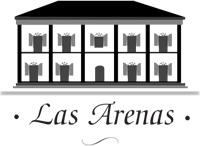Discover the unknown.
The Dominican Republic is the Caribbean's most geographically diverse country, showcasing everything from tropical rainforests and alpine ranges to mangrove swamps and desert expanses. Original settlers of the island were known as “Tainos” who had settled there since 600 AD. Christopher Columbus discovered the island in 1492 which, he named Hispaniola in honors of his King. The Dominican Republic consists of a range of highland and lowland areas, offshore islands, rivers and lakes.
geography
The Dominican Republic occupies the eastern two thirds of Hispaniola Island, considered the second largest island in the Caribbean and shared with Haiti. It’s the second largest island on the Caribbean and comprises an area of 18,712 square miles. It is bordered on the north by the Atlantic Ocean and on the south by the Caribbean Sea, between Cuba and Puerto Rico.
hidden gems
Hoyo azul is one of the most beautiful springs in all of the Dominican Republic. Located southwest of Punta Cana, visitors can make a quick trip down for a scenic adventure.
golf courses
There are plenty of scenic golf courses all over Punta Cana. Ask us about them and we can give you all the information you may need.
divine cuisine
Lots Our “criolla” cuisine mixes the flavors of delicious Spanish, hearty Taino, and spicy African cuisines. Most cities have a diverse culinary offer and a full variety of restaurants; fast-food chains to international and ethnic restaurants, complete our gastronomic landscape. Chefs around the country benefit from seasonings and flavors that define our food style.
The Dominican “criolla” cuisine is rich in meat, rice, beans, vegetables and stews. Local dishes include, “La Bandera”- a combination of white rice, red beans, fried plantains, and meat; “Sancocho”, a savory stew made of five meats, served with rice and vegetables; and ‘Mangú”, mashed ripe plantains served with onions. Seafood and fresh fish are very popular in the island. Exotic tropical fruits like tangerines, mangoes, papayas, guanabanas, guavas and many others are available in every corner. great food.
arts and culture
In addition to their rich culinary history, Dominicans also demonstrate their unmistakable heritage through art. The island is filled with many different types of bright and colorful artwork. Jewelry made out of amber, bone, horn and coconut husk can be found at local markets and shops, where the native Taíno influence can still be seen. In addition to jewelry, Dominican artists also use clay, porcelain, hemp, and guano to make both decorative and religious figurines.
Top major airlines flying to Punta Cana International Airport:
population
The nation’s population is approximately 9 million inhabitants. Near to 3 million people live in Santo Domingo, the Capital City
currency
The Dominican currency is the Dominican Peso (RD$). It comes in denominations of 1, 5, 10 and 25 peso coins and in 20, 50, 100, 200, 500, 1,000 and 2,000 notes. Dollars and Euros can be exchanged in banks and authorized exchange offices across the country. You can find out the exchange rate at www.xe.com/ucc. Major credit cards and travelers' checks are accepted at many of the country's tourist locations. There are restrictions on bringing more than US$10,000 in cash into the country and any amount over this value should be declared on the customs form. It is prohibited to leave the Dominican Republic with more than $10,000 US dollars or the equivalent in cash. If you need cash, it is more convenient to take it out of a bank. They are normally open from 8:30 AM to 4:00 PM. In large business centers, some bank branches are open until 7:00 PM.
language
Spanish is the official language and English is widely spoken. On tourist areas you can also find some knowledge of French, Italian and German
time zone
Local time is Caribbean Eastern Time (GMT -0400). In the winter it is an hour ahead of Eastern Standard Time in the United States. The Dominican Republic does not practice daylight savings time, as is customarily done in the United States.
weather
The Dominican Republic enjoys a tropical climate year-round. Depending on your location, a typical day could have full sun or a combination of sun and clouds.
religion
In the Dominican Republic, freedom of religion is guaranteed and protected under the constitution. Roman Catholicism is the predominant religious group (95%), but there are also minority adherents to such other Christian denominations as Episcopalian, Baptist, Protestant & more.
















